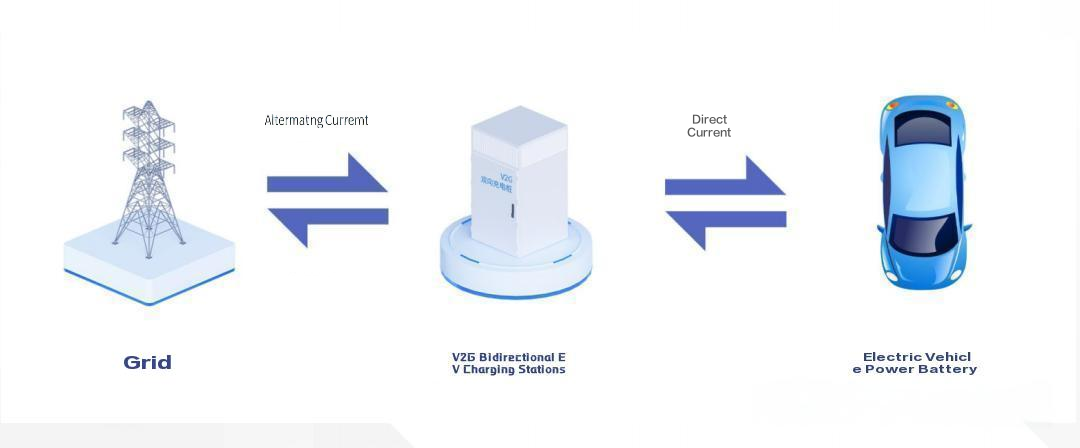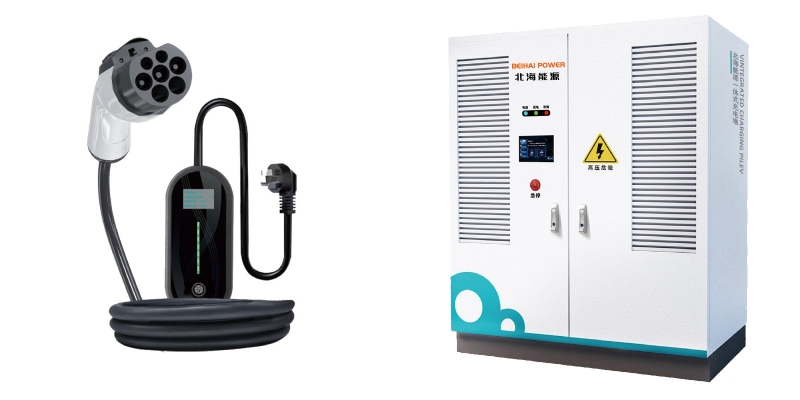The global shift toward electric vehicles (EVs) has positioned EV charging stations, AC chargers, DC fast chargers, and EV charging piles as critical pillars of sustainable transportation. As international markets accelerate their transition to green mobility, understanding the current adoption trends, technological advancements, and policy dynamics is essential for businesses and consumers alike.
Market Penetration and Regional Trends
1. North America: Rapid Expansion with Policy Backing
The U.S. leads North America’s EV charging infrastructure growth, driven by the Bipartisan Infrastructure Law, which allocates $7.5 billion to build 500,000 public EV charging stations by 2030. While AC chargers (Level 2) dominate residential and workplace installations, demand for DC fast chargers (Level 3) is surging, particularly along highways and commercial hubs. Tesla’s Supercharger network and Electrify America’s ultra-fast stations are key players, though challenges like cable theft and high service fees persist.
2. Europe: Ambitious Targets and Infrastructure Gaps
Europe’s EV charging post deployment is fueled by stringent emissions regulations, such as the EU’s 2035 ban on internal combustion engines. The UK, for instance, plans to install 145,000 new electric car charging stations annually, with London already operating 20,000 public points. However, regional disparities exist: DC chargers remain concentrated in urban centers, and vandalism (e.g., cable cutting) poses operational challenges.
3. Asia-Pacific: Emerging Markets and Innovation
Australia’s EV charging pile market is expanding rapidly, supported by state subsidies and partnerships to extend networks to remote areas. Meanwhile, China dominates global exports of AC/DC chargers, leveraging cost-efficient manufacturing and smart charging solutions. Chinese brands now account for over 60% of Europe’s imported charging equipment, despite rising certification barriers.
Technological Advancements Shaping the Future
- High-Power DC Chargers: Next-gen DC charging stations (up to 360kW) are reducing charging times to under 20 minutes, critical for commercial fleets and long-distance travel.
- V2G (Vehicle-to-Grid) Systems: Bidirectional EV chargers enable energy storage and grid stabilization, aligning with renewable energy integration.
- Smart Charging Solutions: IoT-enabled EV charging posts with OCPP 2.0 compliance allow dynamic load management and user-friendly app controls.
Policy and Tariff Dynamics: Opportunities and Challenges
1. Incentives Driving Adoption
Governments worldwide are rolling out subsidies for EV charging infrastructure. For example:
- The U.S. offers tax credits covering 30% of installation costs for commercial DC fast chargers.
- Australia provides grants for solar-integrated EV charging stations in regional areas.
2. Tariff Barriers and Localization Requirements
While China’s EV charging piles dominate exports, markets like the U.S. and EU are tightening localization rules. The U.S. Inflation Reduction Act (IRA) mandates that 55% of charger components be domestically produced by 2026, impacting global supply chains. Similarly, Europe’s CE certification and cybersecurity standards (e.g., ISO 15118) necessitate costly adaptations for foreign manufacturers.
3. Service Fee Regulations
Unstandardized pricing models (e.g., service fees exceeding electricity costs in China and the U.S.) highlight the need for transparent policies. Governments are increasingly intervening; for instance, Germany caps public EV charging station service fees at €0.40/kWh.
Future Outlook: A $200 Billion Market by 2030
The global EV charging infrastructure market is projected to grow at a 29.1% CAGR, reaching $200 billion by 2030. Key trends include:
- Ultra-Fast Charging Networks: 350kW+ DC chargers supporting trucks and buses.
- Rural Electrification: Solar-powered EV charging posts in underserved regions.
- Battery Swapping: Complementary to EV charging stations in high-demand areas.
Conclusion
The proliferation of EV chargers, AC/DC charging stations, and EV charging piles is reshaping global transportation. While policy support and innovation drive growth, businesses must navigate tariff complexities and localization demands. By prioritizing interoperability, sustainability, and user-centric designs, stakeholders can unlock the full potential of this transformative industry.
Join the Charge Toward a Greener Future
Explore BeiHai Power Group’s cutting-edge EV charging solutions—certified, scalable, and tailored for global markets. Let’s power the next era of mobility together.
For detailed market insights or partnership opportunities, contact us today.》》》
Post time: Mar-18-2025












